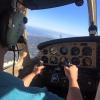
Sign in to follow this
Followers
0

Real world ATC questions along with MCP modes and proper procedures
By
anubhavs, in PMDG 737NGX | 737NGXu


By
anubhavs, in PMDG 737NGX | 737NGXu